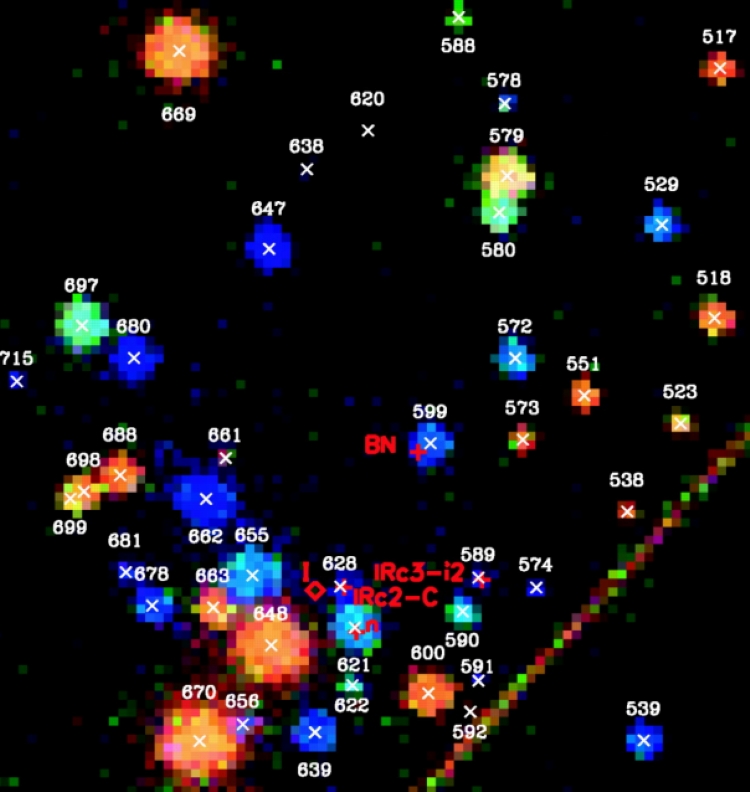
 Credit: Grosso et al. (
2005, The Astrophysical Journal, Supplement Series, vol. 160, pg. 130)
Credit: Grosso et al. (
2005, The Astrophysical Journal, Supplement Series, vol. 160, pg. 130)
A Coup for Chandra
The way by which stars form out of interstellar clouds is complex and not fully understood. Baby stars are surrounded by natal coccoons of gas and dust which are difficult to see through. But X-rays can penetrate through large amounts of matter, so X-ray observations are important tools for astronomers trying to understand the properties of new stars. The image above is part of a large Chandra X-ray observatory project to understand star formation in a nearby stellar nursery, the Orion Nebula. This project, called the Chandra Orion Ultradeep Project, or COUP, stared at the Orion Nebula for 10 days and provided the best-ever X-ray look at this important region. This observation detected X-ray emission from more that 1600 stellar source, most from newly born stars. The image above is a subset of the COUP centered on two regions of especially active star formation. Colors represent X-ray energies, red, green and blue for low, medium and high energy X-rays, and detected sources are numbered; the streak running from upper right to lower left is an instrumental artifact. Scientists are using this treasure trove to help resolve questions about protostellar disks and mass accretion, magnetic activity, stellar clustering, the presence of unseen companions, brown dwarfs and many other fundamental questions regarding the star formation process.
Last Week *
HEA Dictionary * Archive
* Search HEAPOW
* Education
Each week the HEASARC
brings you new, exciting and beautiful images from X-ray and Gamma ray
astronomy. Check back each week and be sure to check out the HEAPOW archive!
Last modified Tuesday, 27-Feb-2024 10:10:02 EST


